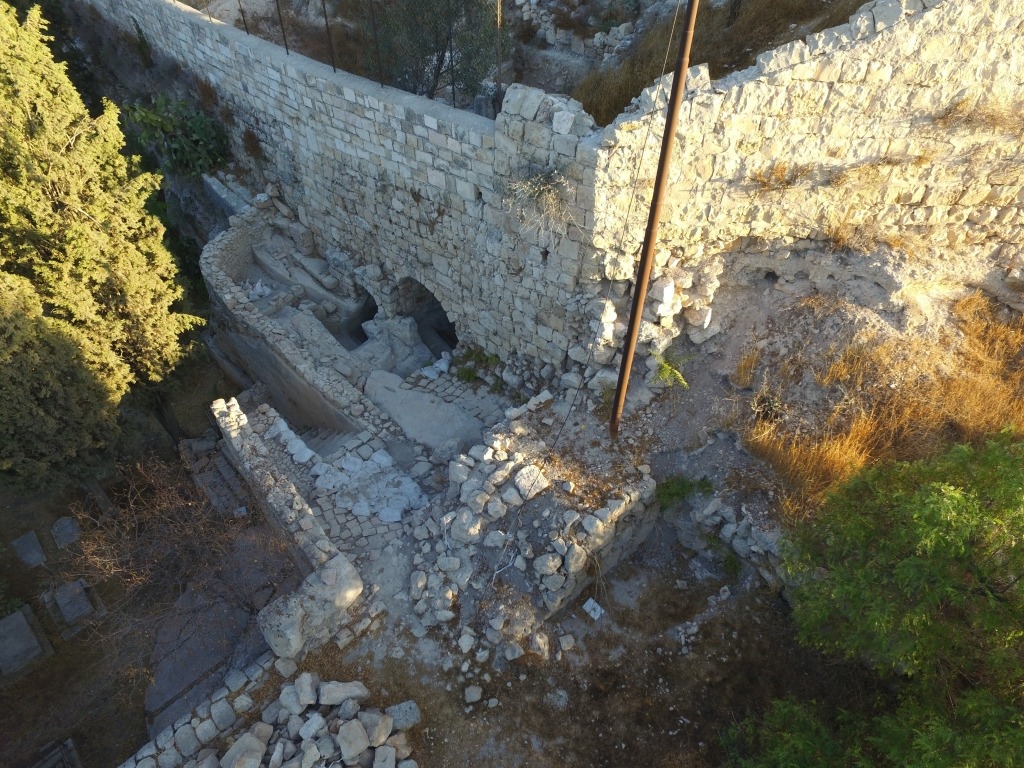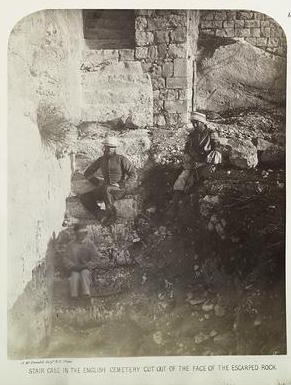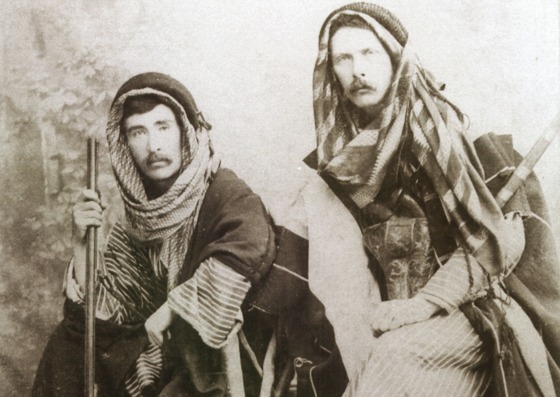Introduction
Two Jewish ritual baths are located on the upper level of the Mt. Zion Cemetery. The southeastern bath, called miqveh, is accessible from a platform via an external staircase. The arch of the entrance was built out of hewn stones and mortar, set in an arch without mortar and using the adjacent rock as support. The miqveh measures 4.2 meters in height, from floor to the highest point of the arc, its footprint measures 4 m2. The vaulted ceiling is, unlike the arched entrance, built from roughly hewn fieldstones. Three stairs and a small platform lead into the bath itself, ending on yet another platform in the bath itself. The north-western miqveh can be accessed via three steps and a platform, hewn into the rock. In this miqveh, the whole depth of the ceiling has been constructed using hewn stones and no mortar.

View on the Miqvaot from southeast

Photo with the old staircase leading town to the byzantine level taken by C. Wilson in 1865 . (Wilson 1865 Ordnance survey of Jerusalem, Jerusalem)

Frederick Bliss and Archibald Dickie explored the area of Mt. Zion between 1894 and 1897.
Discovery and History of Research.
In October 1875, Claude R. Coder reported on Henry Maudsley’s excavation in the area of the miqvaot on Mount Zion. According to him, 36 steps led up to the above to two baths. The rock-hewn steps led in a south-eastern direction onto a level containing the two miqvaot, which he initially misinterpreted as two cisterns. The vault of one of these baths (the northwestern) was found still intact: „They are cut into the rock, with broad steps, giving six feet of water at the back of each. The first (scil. the western) is roofed with beautiful masonry in a round barrel vault.“
Roughly a century after the establishment of the cemetery, Pioneers Frederick Bliss and Archibald Dickie explored the area during the years between 1894 and 1897.
After Bliss and Dickie, it again took a century until the Benedictine monk Bargil Pixner who, motivated by his religious interests, was seeking to find remains of the times of Jesus on Mt. Zion. Based around the two miqvaot, as well as another one nearby (Plot 29), Pixner theorizes of an Essene settlement on Mt. Zion based on accounts of the Essenes particular sense for purity. Yet, Jewish ritual baths are common throughout many other parts of Jerusalem and thus could hardly be seen as evidence, flawing his theory. Pixner dated the ritual bath to a timeframe between 53 BC until 70 AD.
